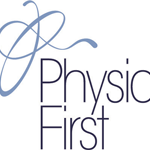Physiotherapy at Hart Physio for Injury Care
Inflammation is the important first stage of tissue healing. It is ideal to start treatment early to limit the inflammatory stage to 24-48 hours post injury. The POLICE (see link) helps to ensure a speedy recovery.
Why does inflammation occur after an injury?
Immediately after an injury, the body floods the injured area with white blood cells and other cells to destroy bacteria and eat up dead or dying cells so that the repair process can begin. Swelling, results from this flood of infection fighters. The excess fluid and cells collect in the spaces between the tissues around the site of the injury. As more and more fluid and cells try to occupy a limited amount of space, they start to press on the surrounding tissues and this pressure is perceived as pain. Chemicals within the swelling also cause local nerve sensitivity.
Are there different kinds of inflammation?
Generally, anything that ends in “ítis” means inflammation. Classic signs of inflammation include redness, heat, swelling, and pain. For example: tendonitis (tendon inflammation), bursitis (bursa inflammation), arthritis (joint inflammation) etc.
Tendonitis
Tendinitis is inflammation or irritation of a tendon — any one of the thick fibrous cords that attaches muscle to bone. The condition causes pain and tenderness just outside a joint. While tendinitis can occur in any of your body’s tendons, it is most common around your shoulders, elbows, wrists, knees and heels. Recent research however suggests that older injuries have little or no inflammation and instead there is a breakdown of the tendon, this injury is referred to as a tendinopathy or tendinosis.
Bursitis
Bursitis is the painful inflammation of the bursa, a padlike sac found in areas subject to friction. Bursae cushion the movement between the bones, tendons and muscles near the joints. Bursitis is most often caused by repetitive movement.
Bursitis is different from swelling, because the fluid is contained in the bursa. Bursitis can still be painful, as the enlarged bursae can compress the surrounding tissues leading to pain. Bursitis can be treated with ice, anti-inflammatory medication, and exercise just like oedema.
Arthritis
Arthritis is inflammation within a joint. The insides of joints are lined with a special tissue called synovium. The synovium produces a fluid that acts like oil within a joint to keep the joint surfaces lubricated. When the joint surfaces get irritated, the synovium becomes inflamed and produces more fluid. Excess synovial fluid is like bursitis in that it is enclosed within the joint capsule. It can cause pain and can be treated much the same as bursitis. The National Institute of Clinical Excellence recommends patients exercise as part of their joint management.
How can Physiotherapy help?
Your Physiotherapist at Hart Physio can help you manage your injury, reduce the associated pain and swelling, and can give you exercises to increase strength, restore mobility and function. Movement plays an important role in the recovery process. Exercise helps to maintain the motion at the injured area, promotes fluid reabsorption and prevents stiffening of joints. Your Physiotherapist can also assist you on returning to work and ergonomics as well as helping develop graded exercise programmes.
When should I see the GP?
You should see your doctor after injury if:
- the joint is painful or swollen and you are unable to put weight through it
- you can feel something moving abnormally within a joint
- the joint feels unstable or wobbly
- there is no response to POLICE
- there is persistent weakness or instability
- you have numbness or tingling as a result of the injury
- you are a child or adolescent
A serious injury may deceive you by not being very painful initially. Also, a mild injury may lead to something worse if not properly treated. If in doubt, get it checked out.




